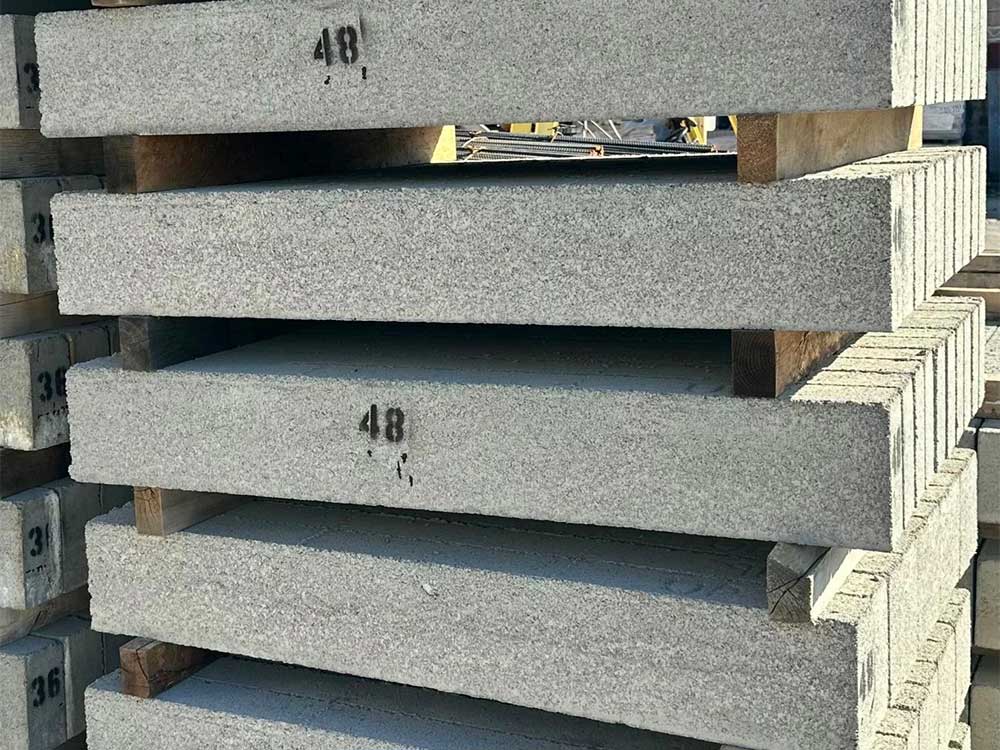Basalt Vs. Fiberglass Rebar: Learn The Differences
Both basalt rebar and fiberglass rebar are nonmetallic composite reinforcements. In both cases, the manufacturing process is similar. Materially, the big difference is the fiber, one being basalt and the other glass.
Read on to learn the differences between the rebar options.
Manufacturing process
Fiber reinforced polymer is made by impregnating fibers with epoxy resin (~ 80% fibers/20% resin). As they are passed down the production line, the resin is cured. If the bars are to be bent or shaped, this must occur before the resin is cured.
Thermal Tolerance
The upper operational limit of both basalt rebar and fiberglass rebar is determined by the type of polymer resin. Above ~200 °C, the resin begins to degrade, allowing the fibers to separate and diminishing its material properties. In this regard, fiberglass rebar can be used in the same way as basalt rebar.
Price and Availability
Glass fibers are more affordable and accessible than basalt fibers. This difference in raw material costs typically means fiberglass rebar is cheaper than basalt rebar. Furthermore, a wider adoption of GFRP (fiberglass) construction codes is driving economies of scale, increasing supply, and reducing the overall cost of fiberglass rebar.
Ultraviolet Light Tolerance
Similar to thermal tolerance, UV light tolerance is also driven by the polymer resin. When exposed to ultraviolet or high-energy electromagnetic radiation, polymers begin to break down. The optical clarity of glass fibers tends to be detrimental because it allows UV rays to penetrate deeper. Basalt rebar tends to have superior UV resistance, although this becomes moot once the rebar is embedded in concrete.
Sustainability and Environmental Safety
Compared to steel rebar, composite rebar emits significantly less carbon and is better for the environment. When comparing basalt and fiberglass, basalt probably has a small edge over the other because it is a natural mineral and not a manufactured good. Manufacturers are experimenting with different ways to recycle glass and fiberglass into reusable filaments. They plan to use it with composite rebar to even out the products in terms of their environmental impact.
Both composite rebars are environmentally inert, which makes reinforced concrete more resilient and longer lasting. Handling and construction techniques show pretty similar hazards for construction workers.
Tensile Strength
The tensile strength of reinforcing bars varies widely between manufacturers. Basalt tends to have greater tensile strength than fiberglass. Some manufacturers, however, have demonstrated 185 ksi fiberglass bars (exceeding the common basalt values of 160 ksi- 175 ksi).
After considering reductions in code due to safety factors, this difference is negligible as many steel materials are 60 ksi.
Conclusion
Regardless of the type of composite rebar you use, both basalt and fiberglass are significantly better than steel rebar when used as concrete reinforcement.
We hope this article helps you choose the best type of rebar for your needs.

VP of Business DevelopmentAaron Fisher
Latest News
4 Features That Makes Masonry Supply Company Stand Out
A masonry supply company plays a crucial role in the success of construction projects, providing essential materials and expertise to […]

Choosing The Right Size Lintel For Your Project
Determining the correct size of a lintel is critical for the stability and longevity of your construction project. A lintel […]

Data Misses on Embodied Carbon
There is significant urgency to avoid, reduce, or even reverse the emissions of greenhouse gases (CO2e) to avoid the worst […]

4 Masonry Tools You Should Have At Home
Effective and efficient masonry work, whether for repairs or new projects, requires the right tools. At home, having a basic […]
